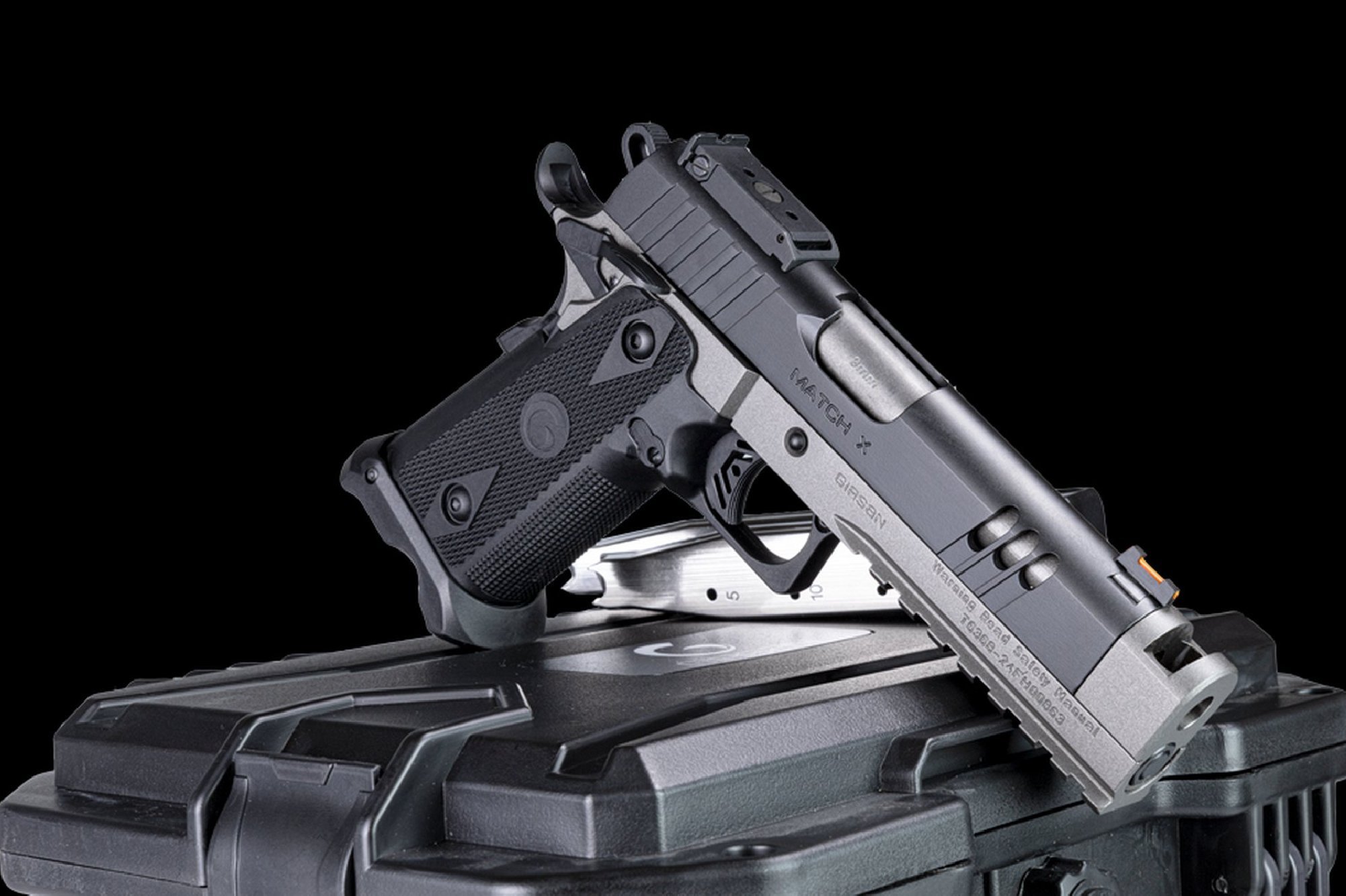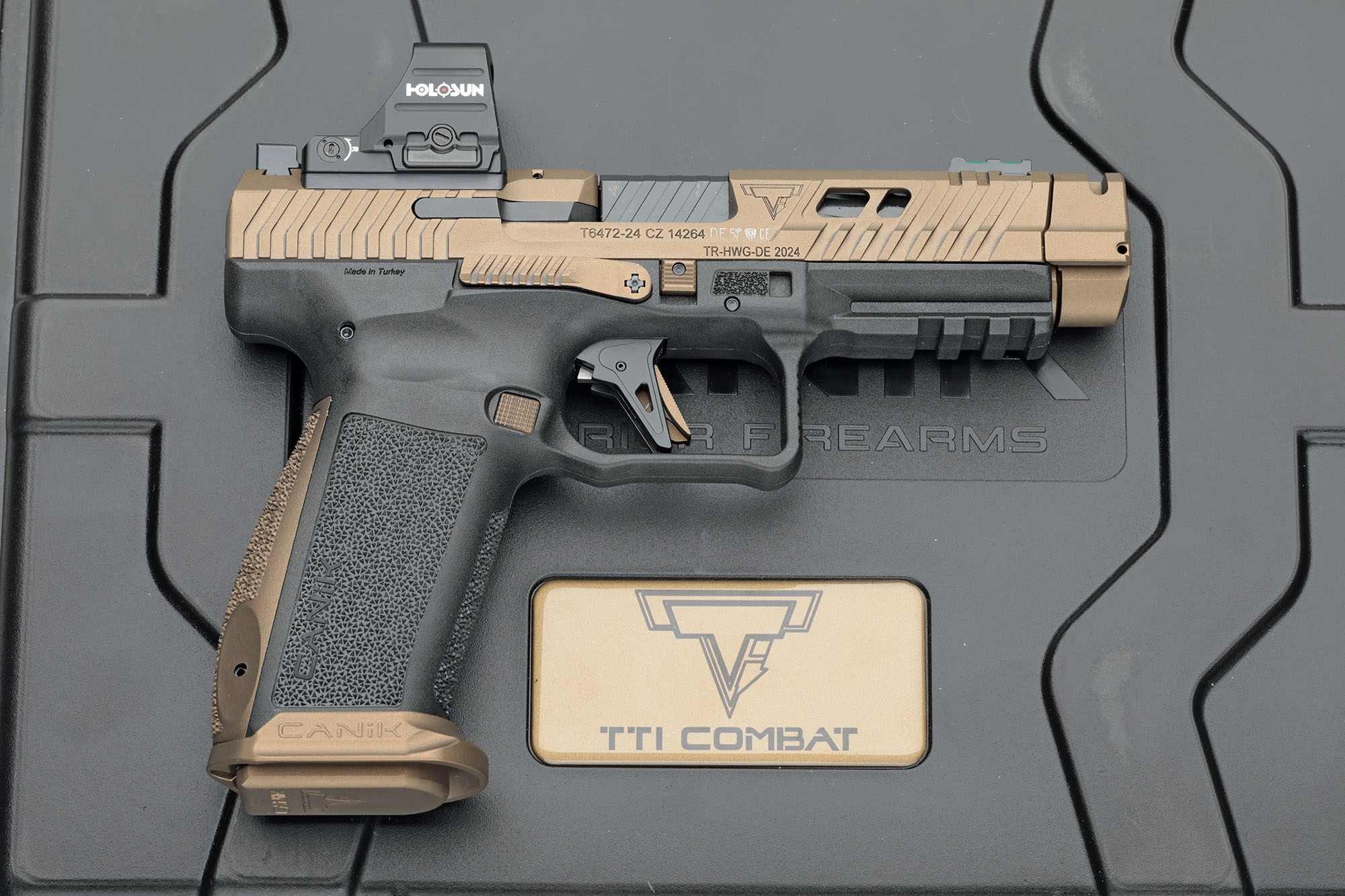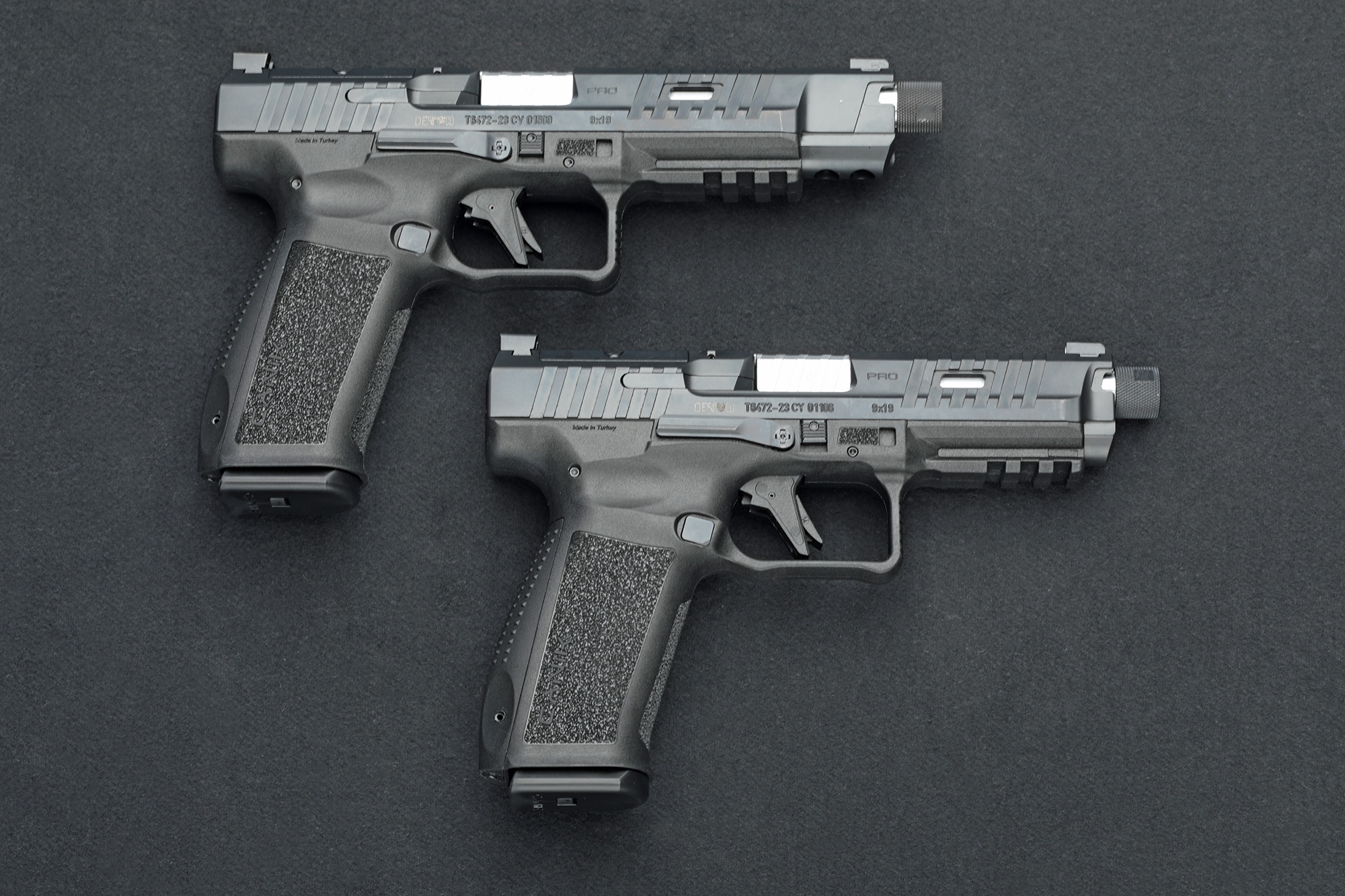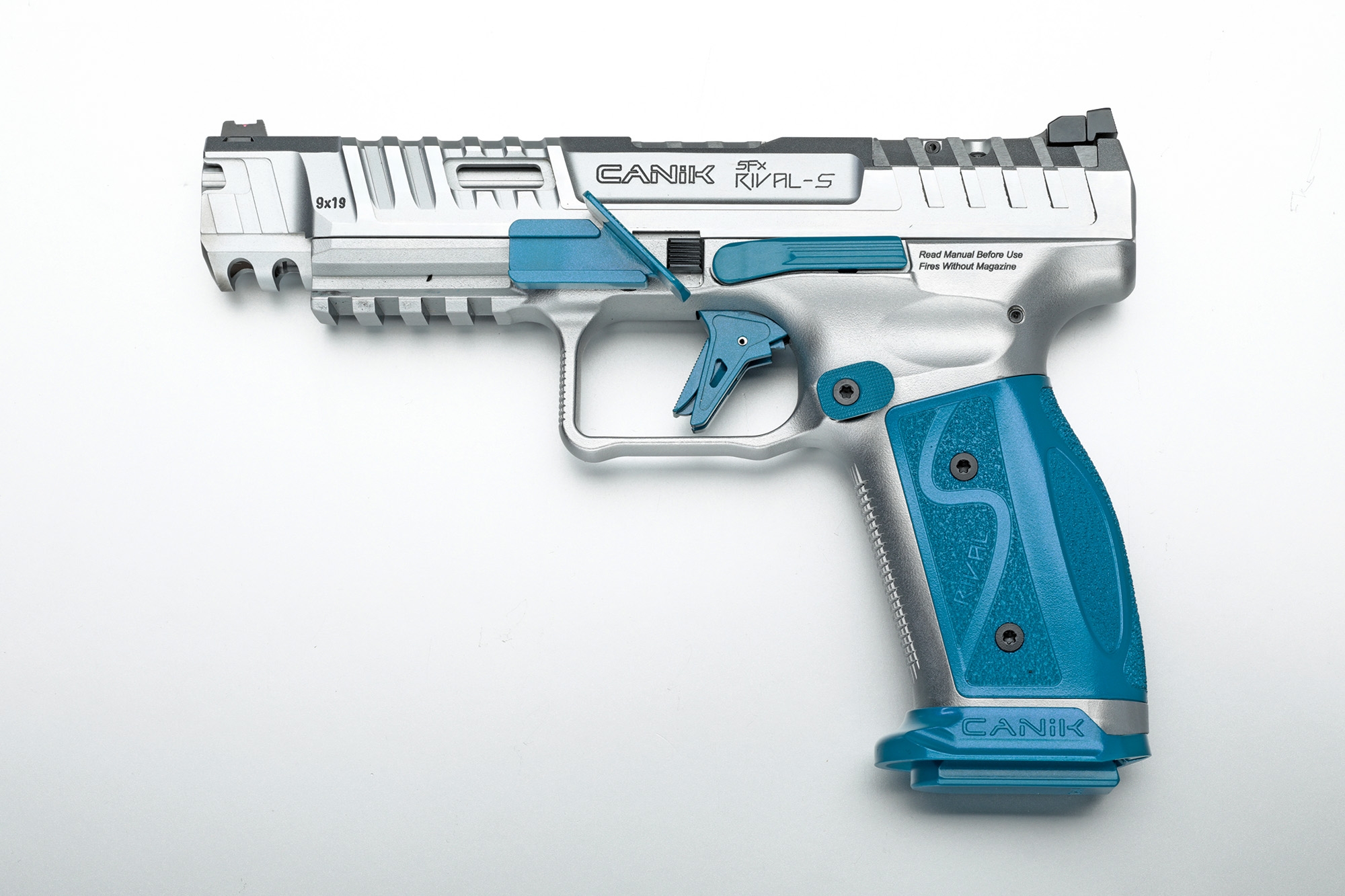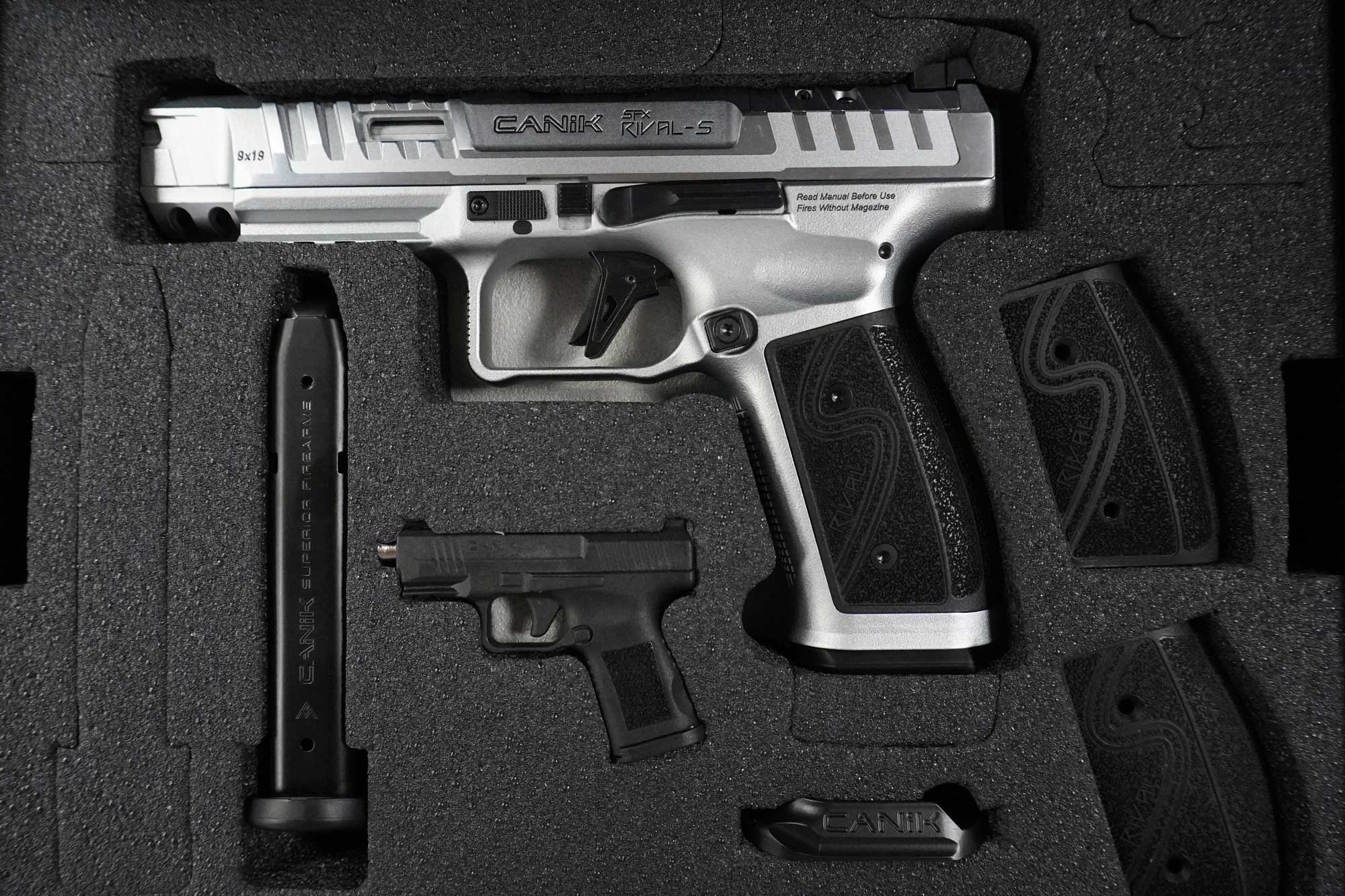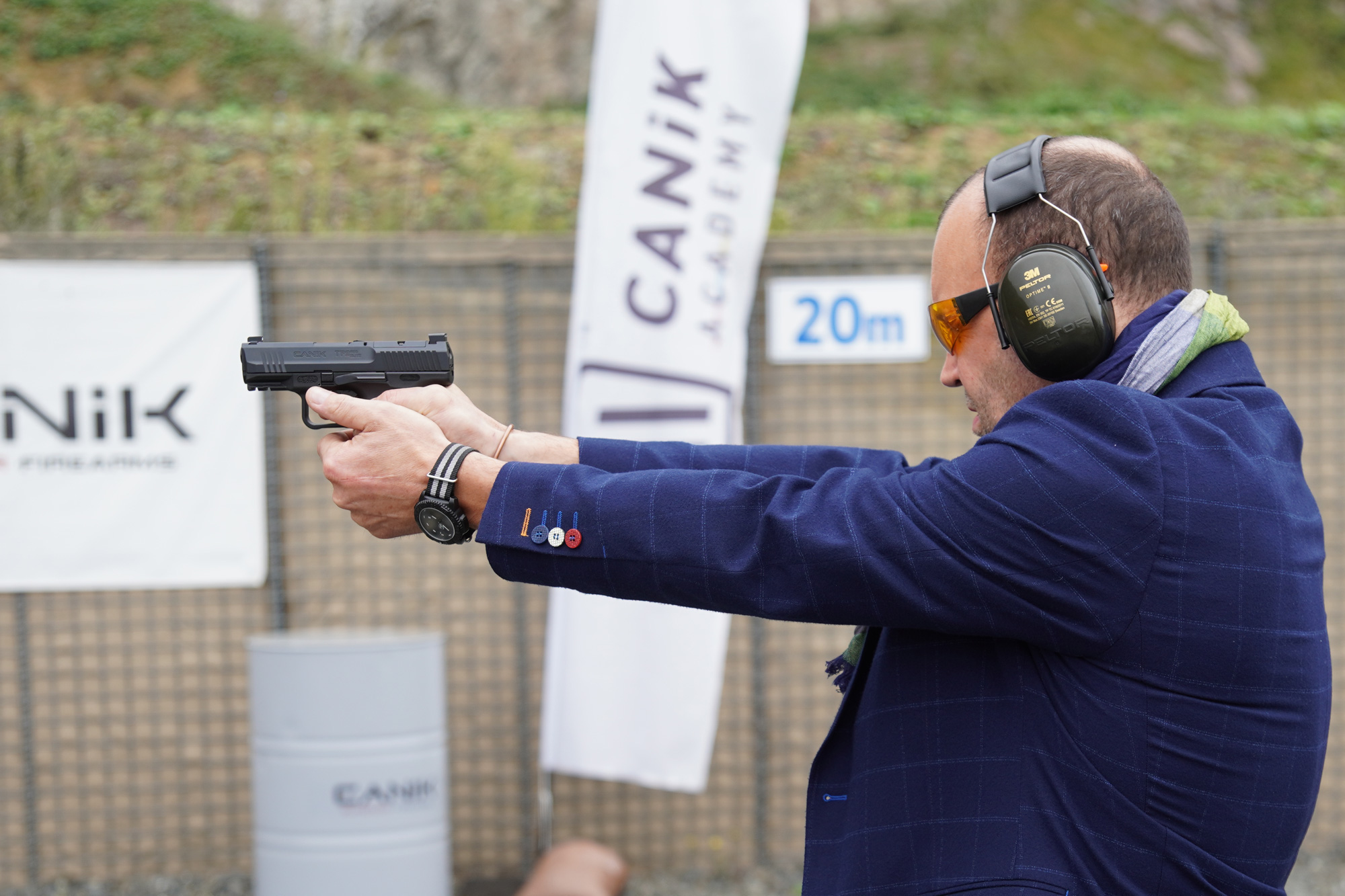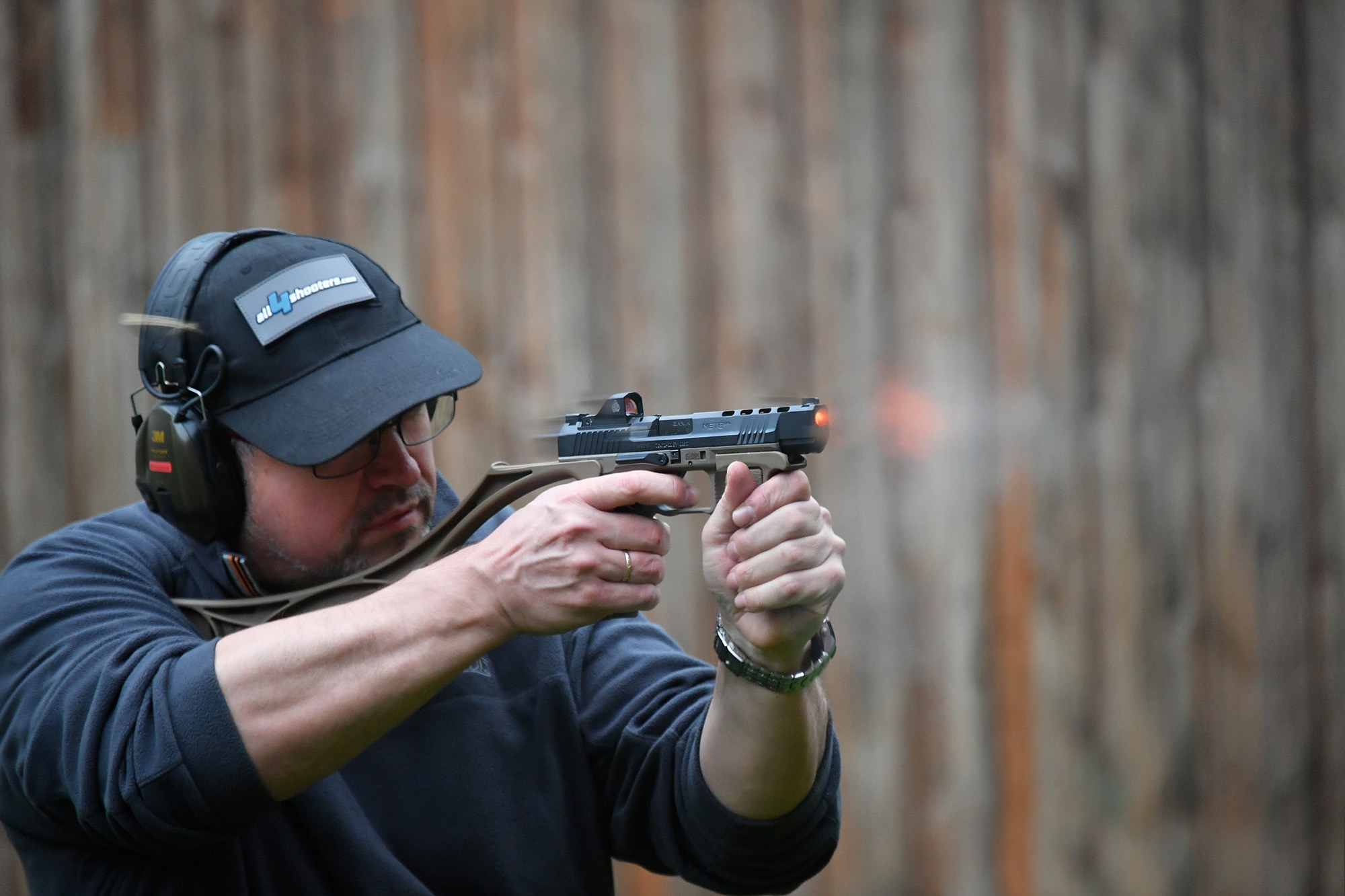There were more and more during the research! Fab Defence, Roni, B&T – of course. But there are also brands such as CAA, Recover or Donaustahl to add to the definitely not complete list of today's stocks for retrofitting. Most of them are for pistols, often in 9mm. Anyone with even a superficial knowledge of historical pistols is familiar with the wooden holster the C96, which can be used as a stock. The "Lange 08" aka "Artillery Luger" had a shoulder stock, like the lesser-known Bergmann-Bayard. Then there was the Inglis variant of the FN Highpower, to name a more recent model. Even after the Second World War, manufacturers such as Star provided stocks for their "MB" 1911 clones , as well as long single-stack magazines with 16 and 32 cartridge capacity. The Soviet Union equipped its 9mm Makarov-manufactured Stetschkin APS machine pistol with them.
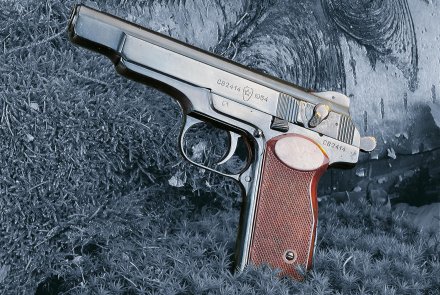
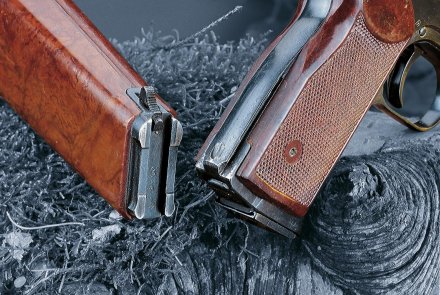
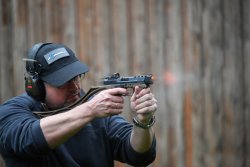
When their manufacturing was discontinued around 1975, the 9mm VP70 from Heckler & Koch had only been in production for a few years, ending in 1984. The slective-fire switch of the VP70M machine pistol was located on the stock and not on the pistol. With an 18-round magazine plus polymer construction, the VP70, like many Heckler & Koch products, was far, far ahead of its time. Then the big brands seemed to put an end to "that sort of thing". Until Wilhelm Bubits gave the Steyr M9, which he co-developed, a shoulder stock again around 25 years ago. And so the triangular front sight of the M9, which was often ridiculed at the time, became interesting – at long ranges, you can aim more accurately with it than with a standard front sight. The Steyr stock is long enough and holds two spare magazines. The first accessory stocks from non-gun manufacturers came onto the market at around the same time. As full conversion kits, or to be attached to the grip or to be mounted on a Picatinny rail. Wilhelm Bubits recently made a sample with a clamp-on system for the Turkish company Canik Mete. And somehow the idea of knitting a makeshift rifle out of a handgun with a clip-on stock is extremely viable. And very old. A good 300 years.
The shoulder stock: a concept from the muzzleloader era
You don't have to look far to find offers for original flintlock pistols with shoulder stocks. There are not only individual pieces made by gunsmiths for the armouries of honourable owners. An early example of large-scale military use is the Swedish cavalry pistol m/1807. From the Thirty Years' War onwards, Sweden was far ahead of many other European states in terms of arming its troops and was always interested in technical innovations and tactics. Although the stock of the m/1807 was nothing new in itself, several cavalry regiments were equipped with it. So there were already "quantities" and these were for military use. The legendary C96 in 9mm Luger did not arrive until 1917, 110 years later. When the flintlock was replaced by the percussion cap around 1830, the subsequent percussion era did nothing to stop the use of shoulder stocks on handguns. And even muzzle-loader replicas are occasionally fitted with a stock. By contrast, revolvers with shoulder stocks were not very common. Even high-quality Colt revolvers at the time suffered from gas leaks, which caused discomfort in the shooter's face wen fired with a short stock. A problem that still exists today.
The modern era: from Mauser C96 to H&K MP7

The mass production of small arms during the First World War led to large quantities of the Mauser C96 being chambered for the 9 mm Luger instead of 7.63x25 – the so-called "Red 9" variants. The Luger Artillery with shoulder stock attachment anticipated the type of weapon known today as PDW, "Personal Defence Weapon". These can be found where even carbines are a hindrance and the support forces have no direct contact with the enemy troops in the normal course of battle. But what if they did? Then members of the Imperial Artillery with their "Long Lugers" could still "...shooth through a horse's head at 300 metres". Then, 40 years later, the Soviet tankers could use the APS Stetchkin instead of a Makarov when disembarking from their knocked-out T54s. From 1918, however, though modified P 08 pistols with drum magazine, shoulder stock and full-auto firing mode, the path led to the submachine gun and not (yet) to the PDW. The shoulder stock helped here, because without it, machine pistols cannot be tamed. The Mauser Model 712 machine pistol, for example, was offered from 1932 onwards. Despite the mass production of submachine guns during the Second World War, the shoulder stock options were retained for some service pistols. After the Second World War, the focus was more on increasing the range of the pistol cartridge by making it safer to fire. The renaissance of machine pistols began in 2002 with the PDW from Heckler & Koch known as the MP7, and also the Herstal PDW FN90 – but you could have used the HK VP70M from 1970...
On the shooting range with the Canik SFx Rival-S and the GSG-9
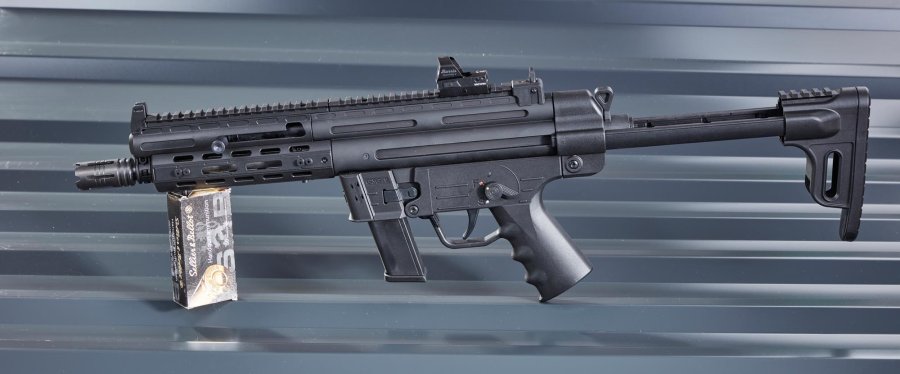
The short GSG pistol caliber carbine – there is also a 16" version for sport shooters – was used due to its short barrel. The 190-mm barrel length of this GSG-9 model is more in relation to the 125-mm barrel length of the Canik SFx-S. It was fired at 50 and 100 metres, a long distance for a PCC, but one that is perfectly manageable from an external ballistics perspective. Depending on the loading, i.e. bullet weight and muzzle velocity, a 9mm Luger bullet falls between 15 and 30 centimetres below the previous point of impact at 100 metres, which was around 15 to 25 metres.
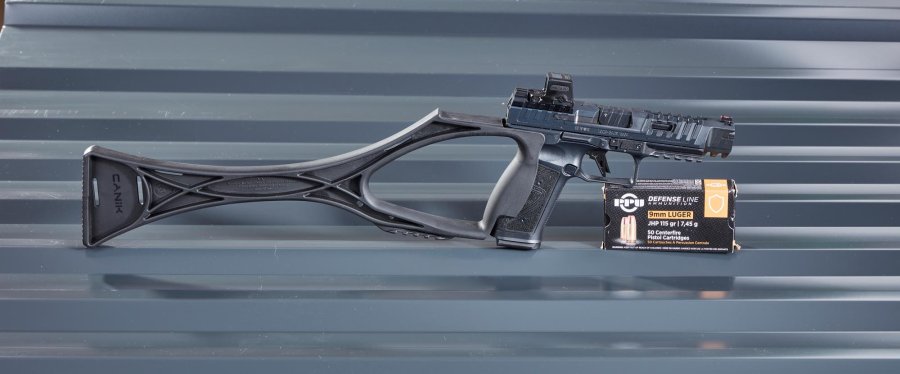
Although a bridge mount is available for the Canik SFx-S, the testers decided to shoot both guns with a red dot sight instead of a scope. In practice, pistols are more likely to have such sights than scopes. Aiming with the stocked Canik is extremely uncomfortable for the back. Nevertheless, despite a cramped posture, a fabulous grouping was achieved at 50 metres. Apart from that, the PCC already shows a higher uniformity at this distance with usually consistently better groups. However, there are exceptions at 100 metres with both guns, and it is worth looking for compatible ammo. The compensator originally fitted to the Canik was soon removed. Not because of poorer shooting performance, but because of the nuisance caused by the gas blown to our face from such close distance.
Canik SFx Rival-S pistol and GSG-9 PCC: technical specifications
Manufacturer | Canik SFx Rival-S | GSG-9 Rifle 7.5" |
Caliber: | 9mm | 9mm |
Capacity: | 18+1 rounds | 10+1 rounds |
Barrel Length: | 5"/127 mm | 7.5"/193 mm |
Trigger Pull Weigth: | 1,950 g approx. | 2,200 g |
Weight: | 1,200 g approx. | 2,230 g |
Equipment: | Detachable shouder stock is optional. | Semi-auto blowback carbine, adjustable trigger, ambidextrous charging handle. Full-length Picatinny rail, interchangeable front sight (10 variants in total), adjustable rear sight. Sliding stock. |
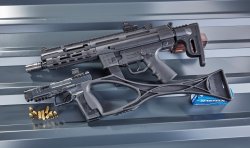
Conclusion: Canik SFx Rival-S pistol and GSG-9 PCC, is the shoulder stock still up to date?
Yes, it works. Even after more than 300 years. With a clean shot release, a pistol plus shoulder stock can hit DIN A5 sheet size targets (148x210mm) or smaller at 100 metres. A 9mm carbine scores with more stable handling, more consistent and also smaller groupings, but handling is like a rifle. The pistol is much more comfortable to carry when holstered and the small, lightweight stock is clipped to the backpack or clothing. However, the short and lightweight design is not forgiving of even the slightest wobble. Only a lousy 2° offset allows the bullet to wander over three metres at 100 metres. The carbine scores over both the barrel length and sight radius. However, after this test, there are no reasons why the shoulder stock should die out.



